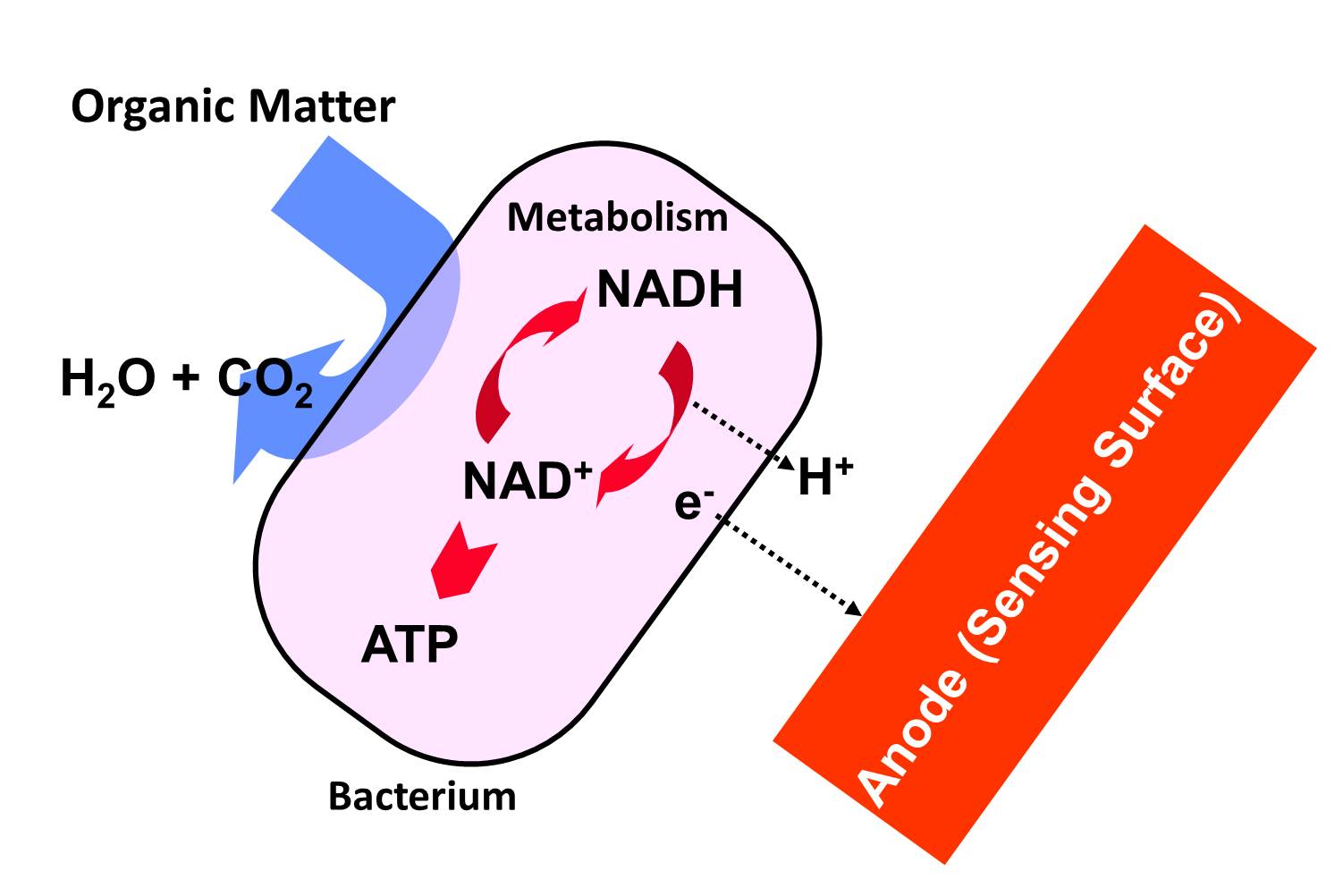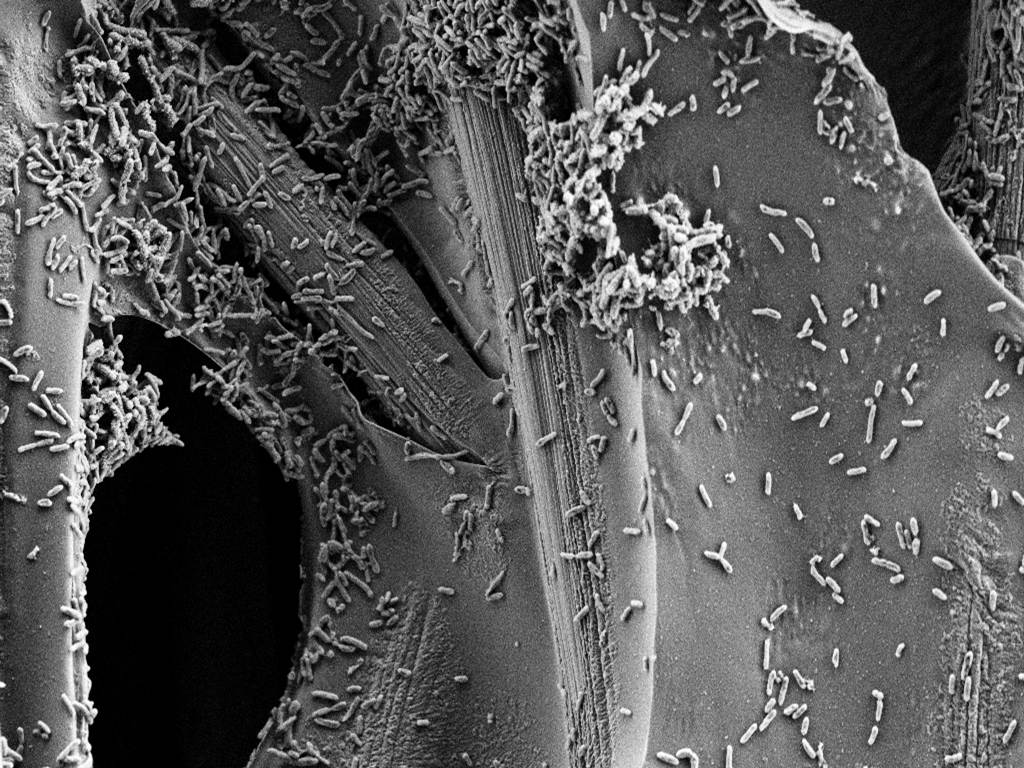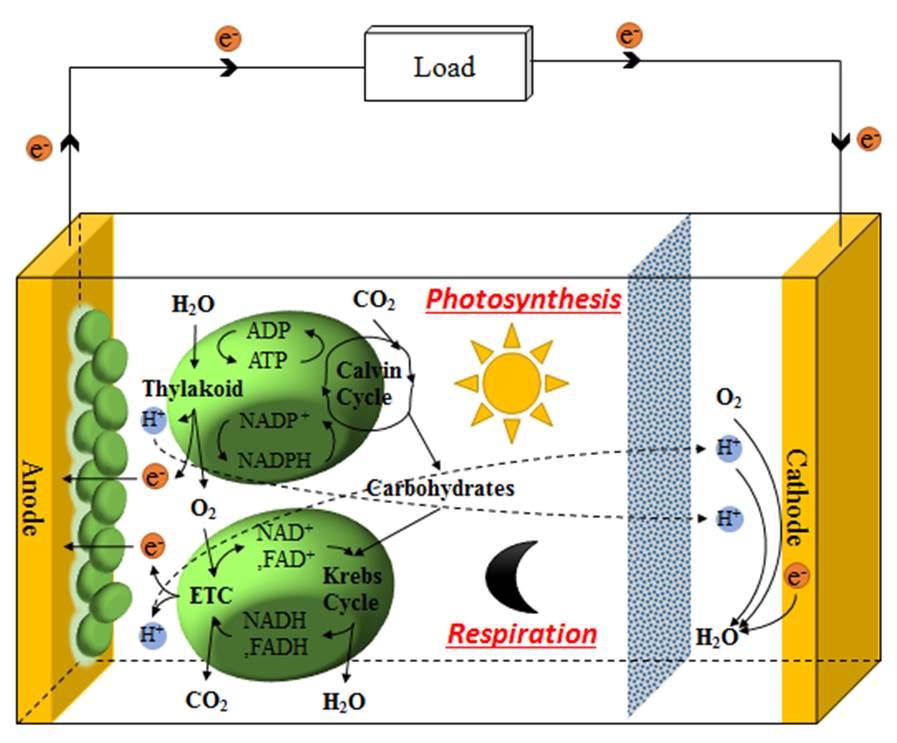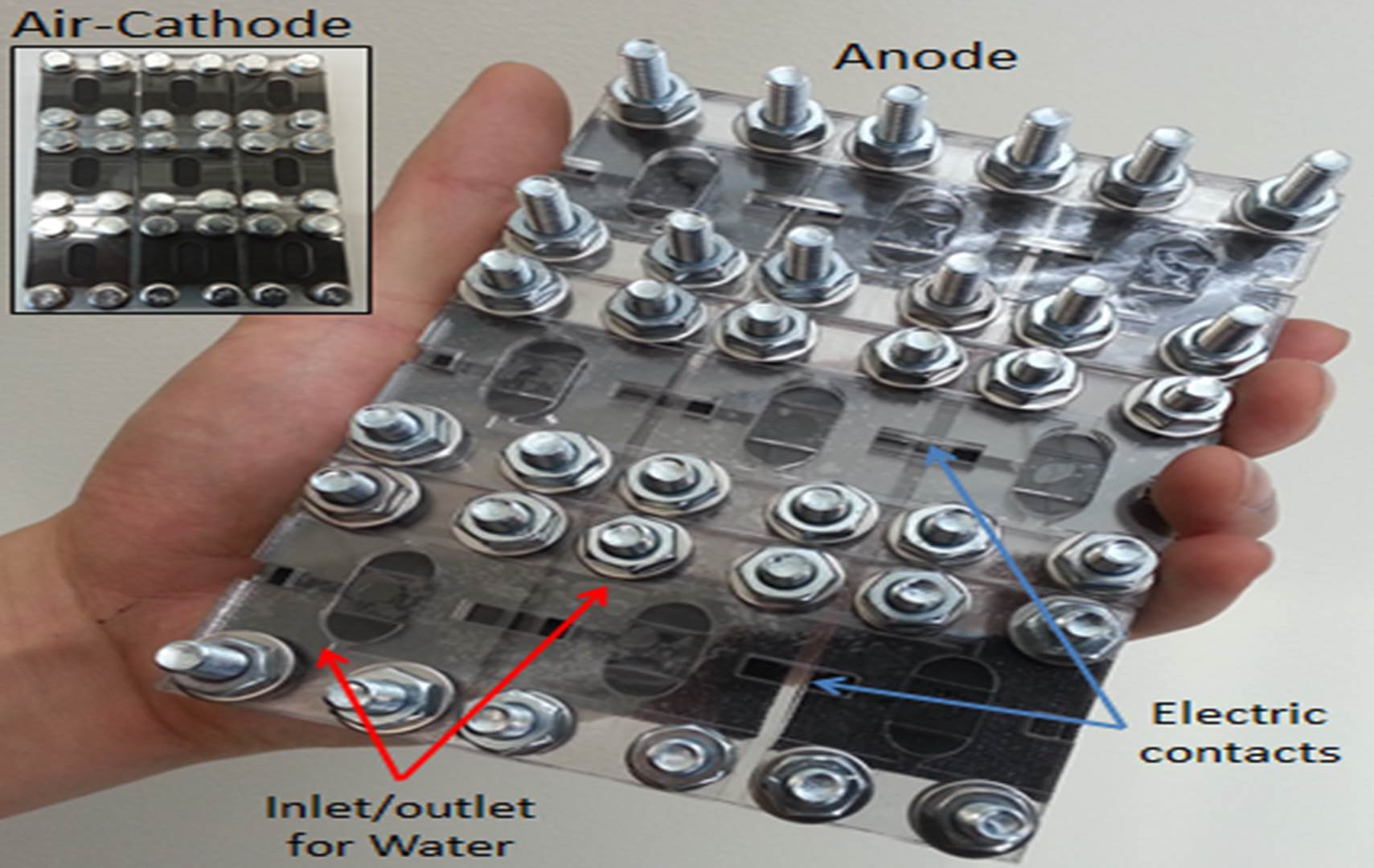| |
|
Microbial fuel cells


|
Microbial fuel cells: Next generation energy technology might originate from
bacteria. Microbial fuel cells (MFCs) are rapidly gaining acceptance as an
alternative "green" energy technology of the future, as they generate
sustainable electric power from biodegradable organic compounds through
microbial metabolism. With the
successful validation of the conceptual macro-sized MFCs as a low-cost
renewable energy technology, recent research has focused on miniaturizing MFCs
for potentially powering small portable electronics. However, existing
micro-sized MFCs are generally limited by their relatively low power density
and low energy efficiency, rendering them insufficient for practical
applications. Their power density is up to five orders of magnitude lower than
that of even macro-sized MFCs, ranging from 0.0023 to 0.4 ąýW/cm^2, and their
energy efficiency is less than 2% or approximately twenty times lower. Thus, there is an urgent need to
significantly improve the performance of the micro-sized MFCs through a
fundamental device level breakthrough that can inherently maximize their power
generating capabilities. We have tried to increase the performance of the
microsized MFCs by decreasing anode energy loss. Micro-sized MFCs show several
orders magnitude higher internal resistance than that of macro-sized MFCs,
resulting in lower power densities and energy efficiency. The prior work shows
that anode energy loss is the main energy bottleneck in the micro-sized MFCs
among the various other resistance sources, which means the poor interactions
between bacteria and the anode might be the main cause of the high internal
resistance. We have developed a microfabricated anode based on gold coated
poly(e-caprolactone) fiber that outperformed MEMS gold electrode by a factor of
2.65-fold and even carbon paper by 1.39-fold. This is a result of its ability
to three-dimensionally interface with bacterial biofilm, the metabolic
í░enginesí▒ of the MFC.
|
|
Biological photovoltaics


|
Biological photovoltaics (or Bio-solar cells) are an emerging technology designed to harnessEarthí»s most abundant and promising energy source (solar irradiation) and self-sustainably
produce electrical power both day and night. The bio-solar cell continuously
generates electricity from solar energy without additional organic fuel.: During
the day, light energy absorbed in photosynthetic reactions splits water to produce
organic substrates (oxygen, electrons); in dark conditions, the device produces
electrons via bacterial respiratory metabolism of the substrates generated
through photosynthesis. Despite their potential, however, todayí»s bio-solar cells have persistent limits: low power density and energy
efficiency relative to competing battery/fuel cell types. These
limits suggest both an urgent need
for fundamental research and several clear
priority objectives for bridging the gap between the vision for a promising
technology and the scientific understanding necessary to realize it. We are developing a novel, scaleable bio-solar cell panel by integrating significantly improved miniature bio-solar cells in an array. The two-part hypothesis is that (i) significant power enhancement can be achieved by
maximizing bacterial photoelectrochemical activities in well-controlled
micro-chambers and that (ii) stacking multiple small-scale bio-solar cells isthe most practical means to scale up. Our rationale is that, because solar
energy is the most promising source of sustainable energy, a high-power bio-solar
panel represents an important novel technology breakthrough that offers a potentially
viable biological alternative to traditional silicon-based solar cells.
|
|
|

